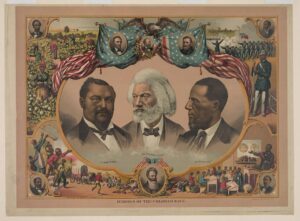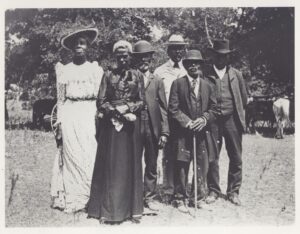Black History Month, also known as African American History Month, is a month-long celebration of contributions African Americans have made to American history, as well as a time to recognize their struggle with adversity while fighting for freedom and equality. Black History Month is celebrated in February each year.

The Origin of Black History Month
In the summer of 1915, Carter G. Woodson traveled to Chicago to take part in a national celebration of the 50th anniversary of emancipation being sponsored by the state of Illinois. Woodson, along with many other exhibitors, presented a black history display. During this three-week celebration, Woodson was inspired and decided to form an organization to promote the scientific study of black life and history. This idea came to fruition on September 9 when Woodson and several colleagues formed the Association for the Study of Negro Life and History (ASNLH).
Along with publishing research findings by black intellectuals in The Journal of Negro History, which he established in 1916, Woodson decided the association would also create and popularize knowledge about the black past. And with that, Woodson established Negro History Week in February, 1926. February was chosen to coincide with the birthdays of Abraham Lincoln (February 12) and Frederick Douglass (February 14), both having a prominent role in shaping black history.
In years following, many mayors across the nation began issuing annual proclamations recognizing Negro History Week. By the late 1960s, many college campuses started celebrating Black History Month due in part to the rising civil rights movement and increasing awareness of Black identity.
In 1976, fifty years after the first celebration, the commemoration of Black history was expanded by the Association for the study of African American Life and History (ASALH) to Black History Month. President Ford issued the first Message on the Observance of Black History Month, as did Presidents Carter and Reagan in subsequent years.
In 1986, Congress passed Public Law 99-244 designating February 1986 as National Black (Afro-American) History Month. In 1996, President Clinton issued a proclamation recognizing February as National African American History Month. Since 1996, presidents have issued the annual proclamation.
Black History Month 2023 theme: Black resistance
African Americans have resisted historic and ongoing oppression, in all forms, especially the racial terrorism of lynching, racial pogroms, and police killings since our arrival upon these shores. These efforts have been to advocate for a dignified self-determined life in a just democratic society in the United States and beyond the United States political jurisdiction. The 1950s and 1970s in the United States was defined by actions such as sit-ins, boycotts, walk outs, strikes by Black people and white allies in the fight for justice against discrimination in all sectors of society from employment to education to housing. Black people have had to consistently push the United States to live up to its ideals of freedom, liberty, and justice for all. Systematic oppression has sought to negate much of the dreams of our griots, like Langston Hughes and Zora Neale Hurston, and our freedom fighters, like the Rev. Dr. Martin Luther King, Jr., Septima Clark, and Fannie Lou Hamer fought to realize. Black people have sought ways to nurture and protect Black lives, and for autonomy of their physical and intellectual bodies through armed resistance, voluntary emigration, nonviolence, education, literature, sports, media, and legislation/politics. Black led institutions and affiliations have lobbied, litigated, legislated, protested, and achieved success.
Read more about this year’s theme on the ASALH site.

A few interesting facts
- Allensworth is the first all-Black Californian township, founded and financed by African Americans. Created by Lieutenant Colonel Allen Allensworth in 1908, the town was built with the intention of establishing a self-sufficient city where African Americans could live their lives free of racial prejudice.
- In 1938, first lady Eleanor Roosevelt challenged the segregation rules at the Southern Conference on Human Welfare in Birmingham, Alabama, so she could sit next to African American educator and activist Mary McLeod Bethune. Roosevelt would come to refer to Bethune as “her closest friend in her age group.”
- Politician, educator and Brooklyn native Shirley Chisholm survived three assassination attempts during her campaign for the 1972 Democratic nomination to the U.S. presidency.
- Josiah Henson fled slavery in Maryland in 1830 and later founded a settlement in Ontario, Canada, for other Black citizens who had escaped. His autobiography, The Life of Josiah Henson, Formerly a Slave, Now an Inhabitant of Canada, as Narrated by Himself (1849), is believed to have been Harriet Beecher Stowe‘s inspiration for the main character in Uncle Tom’s Cabin.
- In 1881, Sophia B. Packard and Harriet E. Giles founded what would become the first college for Black women in the United States. The school was named Spelman College after Laura Spelman Rockefeller and her parents, who were abolitionists. Laura was also the wife of John D. Rockefeller, who made a significant donation to the school.
Read more Little Known Facts About Black History at Biography.com.
Sources:
African American History Month, Library of Congress
About African American History Month, AfricanAmericanHistoryMonth.gov
Little Known Facts About Black History, Biography.com
Association for the Study of African American Life and History

